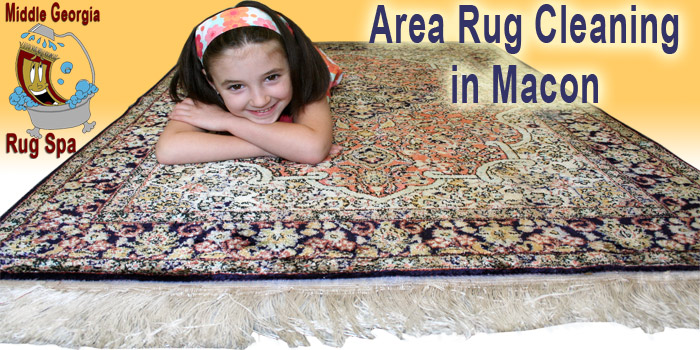Most of the time, whenever odor removal is needed on an area rug, it’s due to pet accidents. I could write all day on the complexity of urine/rug relationships – but I won’t. Instead, I’ll show you pictures and share with you how our odor removal processes go way beyond what most folks realize. But beforehand, please note that each rug is different in its construction and stability. Urine removal is affected by the pet’s diet, previous attempts at removal and the length of time the urine has been deposited in the rug. We must first thoroughly inspect the rugs condition, understand its construction and test the rug dye stability before moving forward with any cleaning and odor removal processes. Note: Some rugs can’t be cleaned the way this one was.
This rug was cleaned in our rug shop and the client’s primary concern was odor from where her pet had “accidents.” I’m going to show you step by step what was done to successfully remove the urine deposits and thoroughly deodorize the rug.
After our pre-inspection and testing, the rug was dusted and then fully submersed in an acid bath to neutralize the urine deposits. You can see this reaction at the back of the wash pit in the picture above.
Once the rug is neutralized, we begin rinsing and draining the rug and “bathtub.” A squeegee is used to assist in moving the dirty water off the rug.
For severe odor problems, we use a subsurface extraction tool to further flush the rug. We apply deodorizing agents appropriate for the rug being cleaned, and then use this tool to pull the agents through the rug backing. This is done to further ensure that we have reached all contaminated layers of the rug. In the picture above, you can see how we are spraying fresh water around the subsurface extraction tool. The vacuum hose on that tool is attached to a powerful vacuum that is pulling the fresh water from around the tool’s perimeter, down through the rug and back up the middle of the tool to the suction hose. The surface of the tool is clear glass so that we can tell when we have flushed out all the urine, dirt, and cleaning agents.

Now, we can focus more on cleaning that dirt in the rug fibers. This planetary machine is safe and gentle on all our rugs and allows us to thoroughly clean all sides of the rug fiber. We use it to brush in our cleaning solution and further lubricate the soil for extraction.


Next, the rug is rinsed again and extracted from the front and the back. At this point we would also apply fabric softener if needed and fabric protector if purchased.


Once the water is extracted from the rug, we use a grooming tool to lay the pile and prepare the rug for drying. In the picture above-right, we are using a carding brush in addition to the grooming tool. This is needed on some finer fabrics that may have experienced pile reversal within the field of the rug.

Once we have finished the rug, it is set up for drying. Some rugs are hung on a drying rack and some are floated on the floor. This one is being dried on the floor. Notice you can see air escaping from the middle of the fringe at the bottom of the rug. Once the rug is dry, we will inspect it closely to ensure that it is thoroughly clean. We will either crawl the rug or hang it up so we can smell the rug and make sure it is odor free. If we detect odor, we will post treat it with friendly enzymes or place it back in the pit to be washed again.
Although this is the most thorough method to clean rugs, some rugs can’t be cleaned this way. Other certified cleaning techniques that we use are dry cleaning, encapsulation and bonnet cleaning. However, if your rug has odor problems, bathing the rug in our wash pit is the only way to guarantee removal of the odor.
